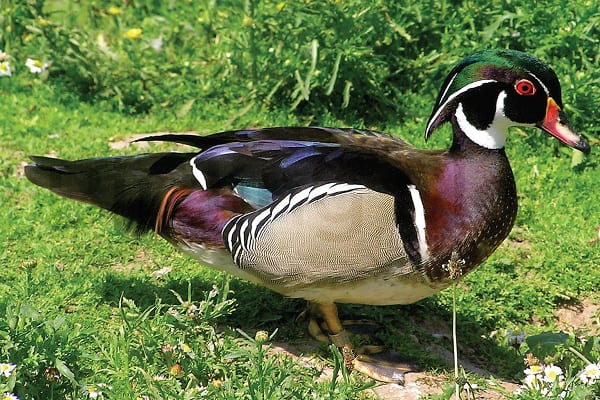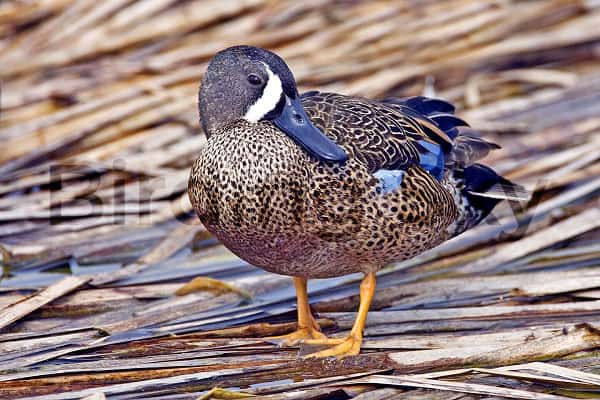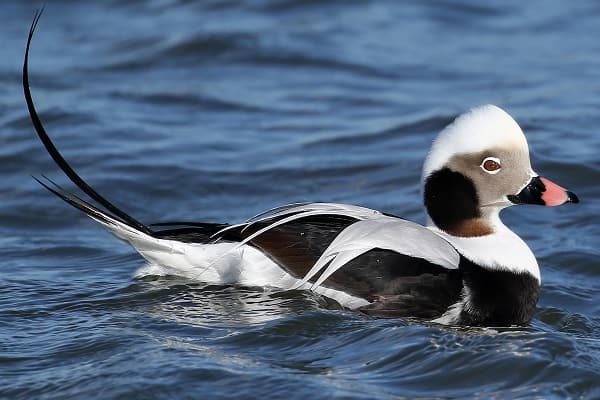Did you know that Georgia is home to a diverse array of ducks? From graceful dabbling ducks to stunning sea ducks, this beautiful state offers a haven for various species. But have you ever wondered how many types of ducks can be found in Georgia? Prepare to be amazed as we delve into the fascinating world of ducks in Georgia, providing detailed information and captivating pictures of each incredible species.
Here are the main points:
- Georgia is home to a wide variety of ducks, offering a rich biodiversity.
- From the elegant mallard to the unique long-tailed duck, each species has its distinct features.
- Ducks in Georgia can be found in ponds, lakes, rivers, wetlands, coastal areas, and wooded swamps.
- Different types of ducks have specific preferences for their habitat and feeding habits.
- Exploring the different species of ducks in Georgia provides a unique opportunity to appreciate the beauty of nature.
Mallard
The mallard is one of the most common ducks found in Georgia. It is a species of dabbling duck that can be easily recognized by its distinctive green head, yellow bill, and brown body. Mallards are highly adaptable and can be found in a variety of habitats, including ponds, lakes, and rivers throughout the state.

These ducks are known for their ability to create nests in a variety of locations, including on the ground or in tree cavities. Mallards are also excellent swimmers and can often be seen gracefully gliding on the water’s surface.
The mallard is not only a familiar sight in Georgia’s waterways, but it is also a beloved symbol of wildlife diversity in the state.
It is interesting to note that male mallards, also known as drakes, have a striking appearance with their vibrant green head and yellow bill. On the other hand, female mallards, known as hens, have a more subdued brown plumage, helping them blend in with their surroundings during nesting season.
The mallard is not only visually appealing but also plays an essential role in the ecosystem. These ducks help control populations of insects and other small aquatic organisms, promoting a healthy balance in their habitats.
Mallard Fact Sheet:
| Trait | Details |
|---|---|
| Scientific Name | Anas platyrhynchos |
| Habitat | Ponds, lakes, rivers |
| Diet | Omnivorous – aquatic plants, insects, small fish |
| Size | 20-26 inches in length, with a wingspan of 32-39 inches |
As you explore Georgia’s waterways, keep an eye out for the mallard, a beautiful and iconic species that adds charm to the state’s natural landscapes. Their distinct features and adaptability make them a true symbol of Georgia’s rich biodiversity.
Must Read Types Of Finches in Illinois
Northern Pintail

The northern pintail is a dabbling duck that can be found in Georgia. It is known for its elegant appearance, with a long and graceful neck, slender body, and distinctive pointed tail. The male pintail has a chocolate-brown head and neck, while the female has a mottled brown appearance. Both sexes have a beautiful blue-gray bill.
These ducks prefer shallow wetlands such as marshes, ponds, and lakes, where they feed by dabbling in the water and tipping their heads underwater to find aquatic plants, seeds, and invertebrates. They can also be seen in open waters, such as estuaries and coastal bays.
“The northern pintail is a delightful sight to behold with its slender silhouette and the male’s elegant plumage. It’s always a treat to spot them in their natural habitat.” – Birdwatcher, Georgia
Key Features of the Northern Pintail:
- Elongated neck and pointed tail
- Male has a chocolate-brown head and neck
- Female has a mottled brown appearance
- Blue-gray bill
Habitat:
The northern pintail prefers shallow wetlands such as marshes, ponds, and lakes. It can also be found in open waters such as estuaries and coastal bays.
Range:
The northern pintail is a migratory species that can be found in Georgia during the winter months. During the breeding season, they migrate to the northern parts of the United States and Canada.
Conservation Status:
The northern pintail is considered a species of least concern by the International Union for Conservation of Nature (IUCN). However, habitat loss, pollution, and hunting are potential threats to their population.
| Common Name | Scientific Name |
|---|---|
| Northern Pintail | Anas acuta |
Lesser Scaup
In Georgia, you can spot the striking Northern Shoveler, a fascinating duck species known for its unique attributes. These ducks can easily be identified by their distinct oversized bill, which sets them apart from other duck species.
The Northern Shoveler’s bill is specially designed to help it filter and capture tiny organisms from the water. Its bill has comb-like projections along the edges, allowing it to sift through the water and extract its food. It’s truly a remarkable adaptation that makes the Northern Shoveler stand out among other ducks found in Georgia.
You can find Northern Shovelers in various habitats such as marshes, lakes, and ponds. They are typically seen foraging for food in shallow waters, often in the company of other ducks. These ducks are not only unique in appearance but also play an essential role in the ecosystem by maintaining a balance in aquatic ecosystems.
Also Visit Backyard Birds of Hawaii
If you ever have the opportunity to observe these Northern Shovelers in person, take the time to appreciate their impressive bill and their graceful movements as they navigate the waters. They are a true marvel of nature and a captivating sight for any nature enthusiast or bird watcher.
| Distinguishing Features | Habitat | Food |
|---|---|---|
| The Northern Shoveler has an oversized bill with comb-like projections along the edges. | These ducks are found in marshes, lakes, and ponds. | They filter tiny organisms from the water using their specialized bill. |
Lesser Scaup
The lesser scaup is a medium-sized diving duck that can be found in Georgia. These ducks have a dark brown body with a white patch on their face, which adds a unique touch to their appearance. They are known for their exceptional diving skills and can frequently be observed in freshwater lakes and reservoirs across the state. Lesser scaups are highly adapted to foraging underwater and have a specialized bill that enables them to catch small invertebrates and plant material while submerged.

Characteristics of the Lesser Scaup
- The average size of an adult lesser scaup ranges from 40 to 48 centimeters (15.7 to 18.9 inches) in length.
- Adult males have a black head, back, and breast, while their sides are a striking white color.
- Adult females, on the other hand, have a dark brown head and body with small white patches on their face.
- These ducks have a wingspan of approximately 68 to 79 centimeters (26.8 to 31.1 inches).
- Both males and females have yellow eyes and a black bill.
The lesser scaup is a migratory bird that spends its breeding season in the northern parts of North America and migrates to the southern regions, including Georgia, during the winter months. They often form large flocks and can be seen in groups on the water. Despite their abundance, the lesser scaup faces certain conservation concerns due to habitat degradation and hunting pressures. Efforts are being made to protect and manage their populations to ensure their long-term survival.
| Lesser Scaup | Information |
|---|---|
| Scientific Name | Aythya affinis |
| Average Length | 40-48 cm (15.7-18.9 in) |
| Wingspan | 68-79 cm (26.8-31.1 in) |
| Habitat | Freshwater lakes and reservoirs |
| Conservation Status | Least Concern |
American Wigeon
The American wigeon is a dabbling duck species that can be found in Georgia. With its brown head and a distinctive white patch on its forehead, it is easily recognizable. These ducks prefer shallow wetlands and can often be seen feeding on vegetation.

The American wigeon, scientifically known as Anas americana, is a medium-sized duck that belongs to the Anatidae family. They have a wingspan of 28 to 31 inches and an average weight of 1.7 to 2.4 pounds. These ducks are known for their beautiful plumage, with males exhibiting vibrant breeding plumage and females having a more mottled appearance.
During the breeding season, male American wigeons showcase their colorful plumage. They have a chestnut-colored head with a green band behind their eyes. Their body is a mix of gray, black, and white, and they have a shiny green speculum (wing patch) that stands out during flight. In contrast, female American wigeons have a more subdued appearance, with a gray-brown plumage and a pale blue-gray bill.
Feeding Behavior
American wigeons primarily feed on aquatic plants, grasses, and seeds. They are excellent dabblers and forage by dipping their heads underwater or upending their bodies to reach vegetation below the surface. These ducks also graze on land, feeding on grasses and other terrestrial plants.
You may want to explore Black Birds with Yellow Beaks
Habitat and Distribution
American wigeons can be found in a variety of wetland habitats, including freshwater marshes, ponds, lakes, and coastal estuaries. In Georgia, they can be spotted in places like Okefenokee National Wildlife Refuge, Altamaha Wildlife Management Area, and Savannah National Wildlife Refuge.
These ducks have a wide distribution throughout North America, breeding in the northern regions and wintering in more southern areas. In addition to Georgia, they can be found across the United States, Canada, and parts of Mexico. During the winter months, many American wigeons migrate to areas along the Gulf Coast and the Atlantic Coast.
Conservation Status
The American wigeon is categorized as a species of least concern by the International Union for Conservation of Nature (IUCN). Although they face certain threats such as habitat loss and degradation, their populations appear to be stable. Conservation efforts focused on preserving wetland habitats and limiting disturbance to these areas can contribute to the long-term conservation of American wigeons and other duck species.
| Physical Characteristics | Habitat | Distribution |
|---|---|---|
| Distinctive white patch on forehead | Shallow wetlands, freshwater marshes, ponds, lakes | North America, including Georgia, United States, Canada, and parts of Mexico |
| Brown head and colorful breeding plumage in males | Coastal estuaries | Wintering along the Gulf Coast and Atlantic Coast |
| Mottled appearance in females | – | – |
Related Article Woodpeckers in Georgia
Wood Duck
The wood duck is one of the most beautiful ducks found in Georgia. They have a colorful plumage with a distinct white stripe running from their eyes to the back of their neck. These ducks can be found in wooded swamps and marshes.

If you ever have the chance to witness a wood duck up close, you’ll be amazed by their vibrant feathers. The males boast a combination of iridescent greens, purples, and blues, while the females have more muted and earthy tones. This striking contrast in colors makes them a true sight to behold.
Wood ducks are considered diving ducks, which means they can dive underwater for food. Their diet primarily consists of aquatic plants, seeds, and insects that they find in the water. With their unique bill, which is specially designed for filtering out food, they can easily thrive in their wetland habitats.
“The wood duck is truly a marvel of nature. Its stunning appearance and diving capabilities make it a favorite among birdwatchers and nature enthusiasts.” – BirdLife International
In addition to their colorful plumage and diving abilities, woodducks are also known for their interesting nesting habits. Unlike many other ducks, they nest in tree cavities, often close to water bodies. This behavior helps protect their eggs and young from potential predators.
Unfortunately, wood ducks faced a decline in numbers during the early 20th century due to habitat loss and hunting pressures. However, conservation efforts have played a crucial role in their recovery, and their populations have rebounded significantly.
Wood Duck Facts
- Scientific Name: Aix sponsa
- Size: They are medium-sized ducks, with males measuring around 19-21 inches and females slightly smaller.
- Habitat: Wooded swamps, marshes, and forested wetlands.
- Range: Wood ducks are found throughout North America and can be frequently seen in Georgia.
- Conservation Status: Least Concern (IUCN Red List)
| Characteristic | Male | Female |
|---|---|---|
| Plumage Colors | Brilliant greens, purples, and blues | Muted browns and grays |
| Distinctive Features | Colorful plumage, white stripe on the head and neck, crested head | Mottled brown appearance, white eye-ring |
| Size | 19-21 inches | Slightly smaller than males |
Blue-winged Teal
The blue-winged teal is a small dabbling duck that can be found in Georgia. These ducks showcase handsome breeding plumage with a blue-gray head and a white crescent on their face. Their compact size and striking colors make them an intriguing sight for birdwatchers and nature enthusiasts.

Blue-winged teals are commonly found in shallow wetlands, such as marshes, ponds, and small lakes. They prefer to feed on aquatic vegetation and invertebrates, which they dip their bills into the water to gather. They are skilled dabblers, reaching down into the water to forage and filter out small food items.
This species of duck is known for their high-pitched whistling call, which is often heard during their breeding season. It is believed that their vocalizations play a role in courtship and territorial displays. These ducks are social and can often be seen in small groups or mixed flocks with other dabbling ducks.
The blue-winged teal is a migratory species, with individuals spending their breeding season in northern North America and then migrating south during the winter months. In Georgia, they can be spotted during the fall and spring migration periods, as well as overwintering in some parts of the state.
With their stunning appearance and unique behaviors, the blue-winged teal adds charm and diversity to the array of ducks found in Georgia’s wetland habitats. Their presence is a testament to the state’s rich biodiversity and the importance of preserving and protecting the natural environments where these beautiful birds thrive.
Also Read Woodpecker Symbolism and Spiritual Meaning
Long-tailed Duck
The long-tailed duck is a fascinating species of duck that can be found in the coastal waters of Georgia, particularly during the winter months. This unique duck is known for its distinctive long tail, which sets it apart from other duck species. With a dark brown body, the long-tailed duck stands out among its feathered counterparts.

As sea ducks, long-tailed ducks have adapted to life in the open water. Their long tails help them navigate through the waves and dive deep beneath the surface in search of food. These ducks primarily feed on mollusks, crustaceans, and aquatic insects, which they locate by diving and using their exceptional underwater vision.
If you find yourself near the coastal areas of Georgia during the winter, keep an eye out for the graceful long-tailed ducks. They often gather in flocks, bobbing on the water’s surface or diving beneath it. Their presence adds beauty and diversity to the coastal wildlife and offers birdwatchers an opportunity to observe these stunning sea ducks in their natural habitat.
You May Want to Read these Related Topics:-
